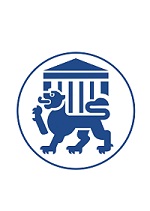Modern Appearance of Rezekne’s Ancient Latgalian Centre
Last modified: 20.10.2017
Abstract
Due to interaction of nature and human activities in regional cities of Latvia a qualitative architectonic space was created over the centuries, which manifests the local inhabitants’ attitude towards art and architecture, and which during the long development process has obtained a characteristic language – a system of relations between well-known signs and symbols for reflection of the deepest nature of creative expression. Looking for harmony in the interaction of the new and historical building through movement, development and contradictions, the dialectics of the architectonic forms is clearly shown. In Latgale the harmony of nature and building encourages you to look for artistically innovative solutions for enrichment of cultural environment. In the centre of Rēzekne beside the Latgalian hillfort, the building complex of the Eastern Latvian Creative Service Centre “Zeimuļs” has built. Roof forms of the lower construction volume are adapted to the hillfort’s relief, but its buildings contrast with surrounding houses, which remind you of sculptures, whose silhouettes are legible on the background of the landscape and sky. The plastic construction of the construction site is clearly revealed in the playful lights of the spatial structure, heterogeneity and dynamics, providing a semantic message to all of us.
Topicality of the theme: cities in the Baltic lands developed not only as centres, where values of culture and art were collated, which describe the human being’s higher ideals and confirm the former generations’ achievements in the environment creation, but also their planning and architecture include information on lots of important processes in the past. In the market economy conditions territories of urban historical building are exposed to the impact of development suggestions and new buildings do not always integrate successfully in the architectonically spatial environment created through lots of centuries. Insufficient awareness of culture-historical values affects the quality requirements, thus the research on ancient urban building and planning, preservation of values, also promotion of best practices becomes topical.
Goal of the paper: observing objects in nature, applying photo fixations and graphical materials, analyse the correlation of Rēzekne’s ancient and modern architecture, impact of solutions of the earlier ages on the modern urban planning and architectural development.
Theoretical research methods: the comparative method is the main one in the research, which gives an opportunity to obtain general and particular conclusions. The logical method or analogous conclusion has also been applied.
Keywords
References
Keiviša, J. (2015) Sarkano ķieģeļu arhitektūras raksturojums 19. gs. beigās un 20. gs. sākumā Latgales pilsētās. No: Mūzika un māksla kultūras diskursā. Rēzekne: Rēzeknes Tehnoloģiju akadēmija. (In Latvian)
Krastiņš, J. (1992) Latvijas pilsētu attīstība XIX gs. otrajā pusē. No: Latvijas reģionālā arhitektūra. Rīga: Rīgas Tehniskā universitāte. (In Latvian)
Latgale. Sīvera ezers. Silvijas Ozolas pastkaršu kolekcija.
Rēzekne. (1938) Latvijas pilsētas valsts 20 gados. Rīga: Latvijas pilsētu savienība. (In Latvian)
Laube, E. (1960) Raksti par arhitektūru. Linkolna: Vaidava. (In Latvian)
Lielais Latvijas atlants. (2012) Rīga: Karšu izdevniecība Jāņa sēta. (In Latvian)
Mugurēvičs, Ē. (2011) Rēzeknes pils un novada vēsture 9. – 17. gs. pēc rakstītiem avotiem un arheoloģisko izrakumu datiem. No: Latvijas viduslaiku pilis, VII. Pētījumi un avoti par Livonijas ordeņpilīm. Rīga: Latvijas vēstures institūta apgāds. (In Latvian)
Strautmanis, I. (1977) Dialogs ar telpu. Rīga: Liesma. (In Latvian)
Strautmanis, I. (1992) Reģionālās arhitektūras formveides valoda. Rīga: Rīgas Tehniskā universitāte. (In Latvian)
Šterns, I. (2002) Latvijas vēsture. 1180–1290: Krustakari. Rīga: Latvijas vēstures institūta apgāds. (In Latvian)





